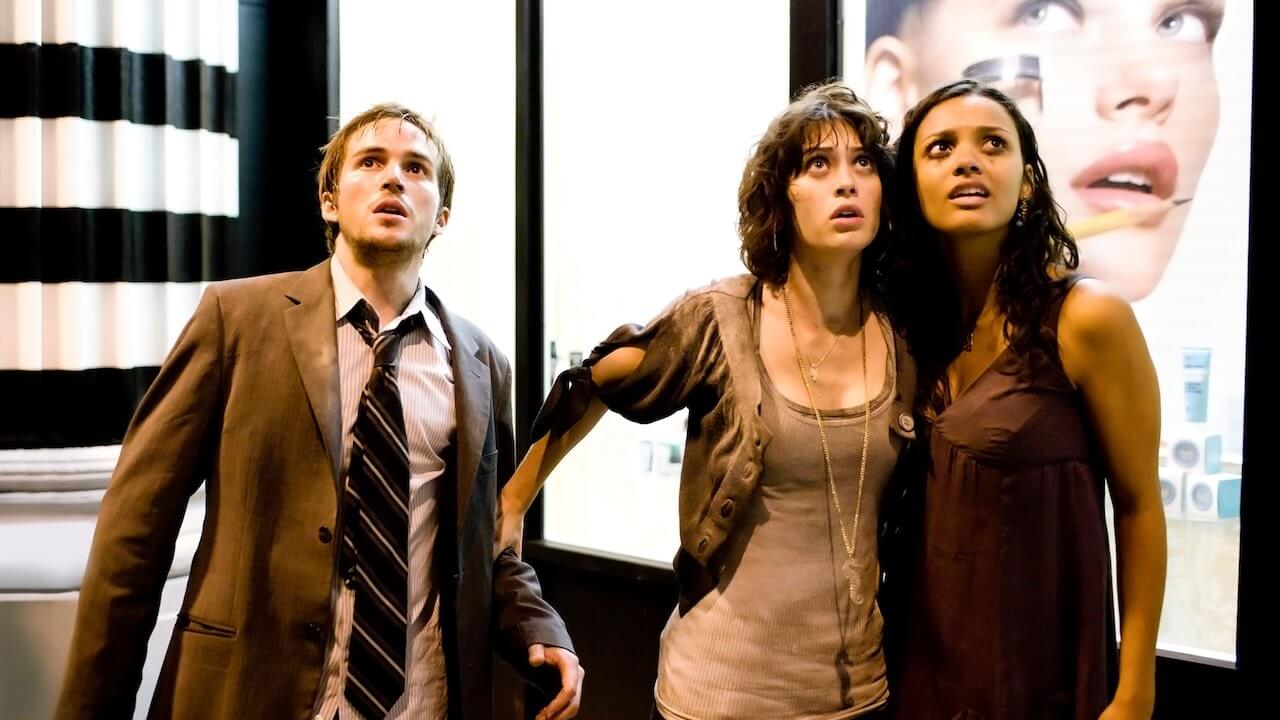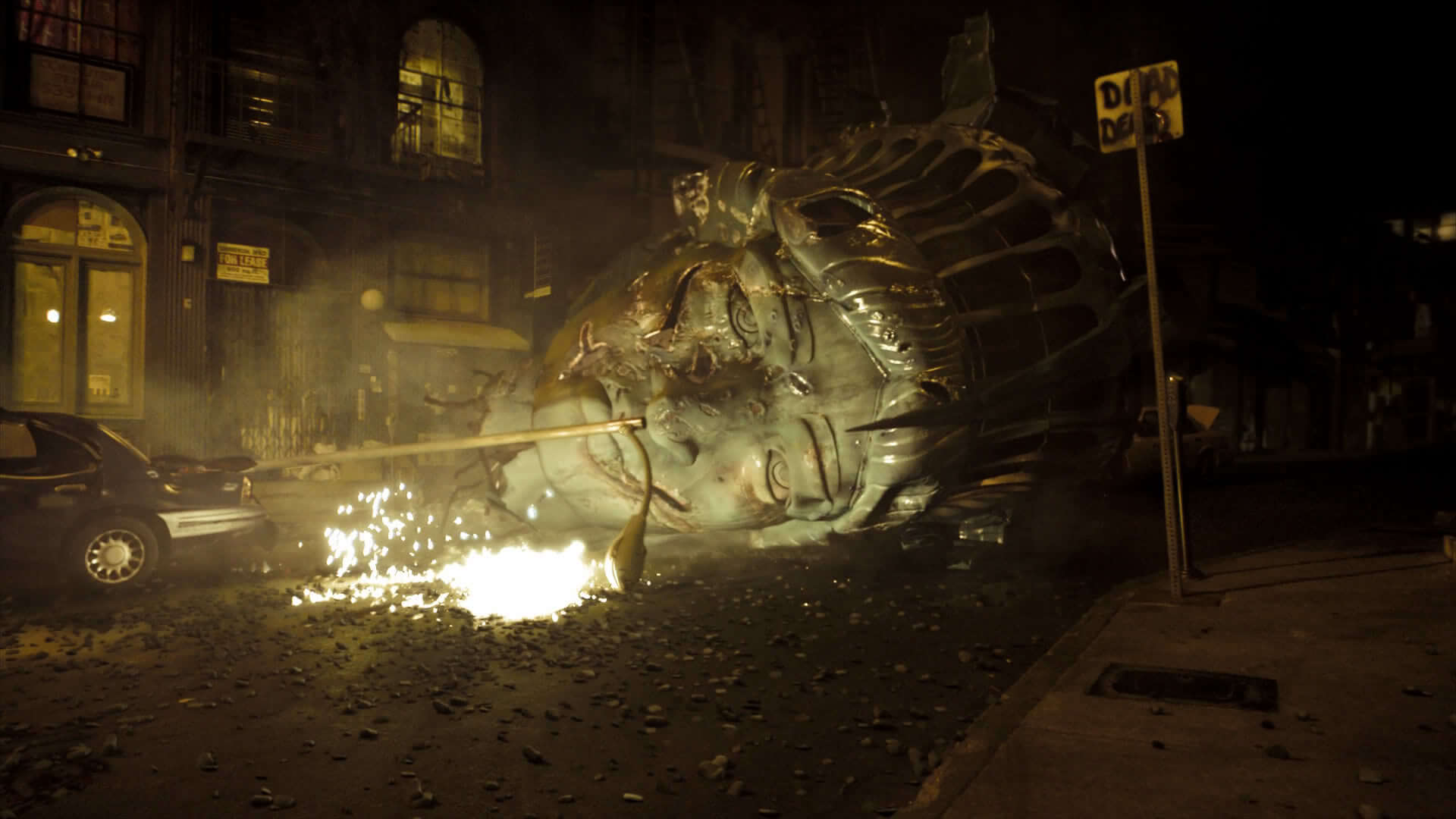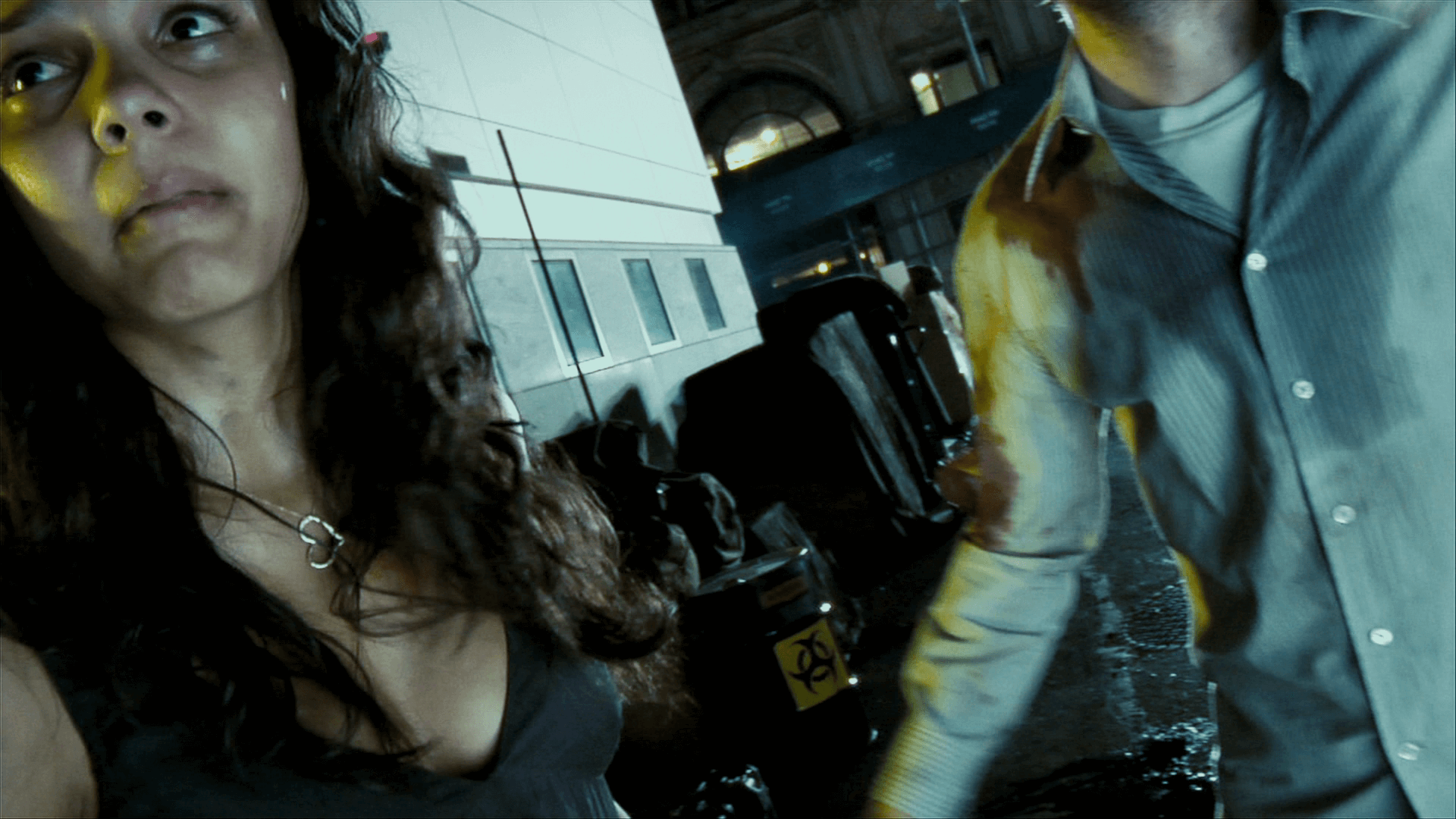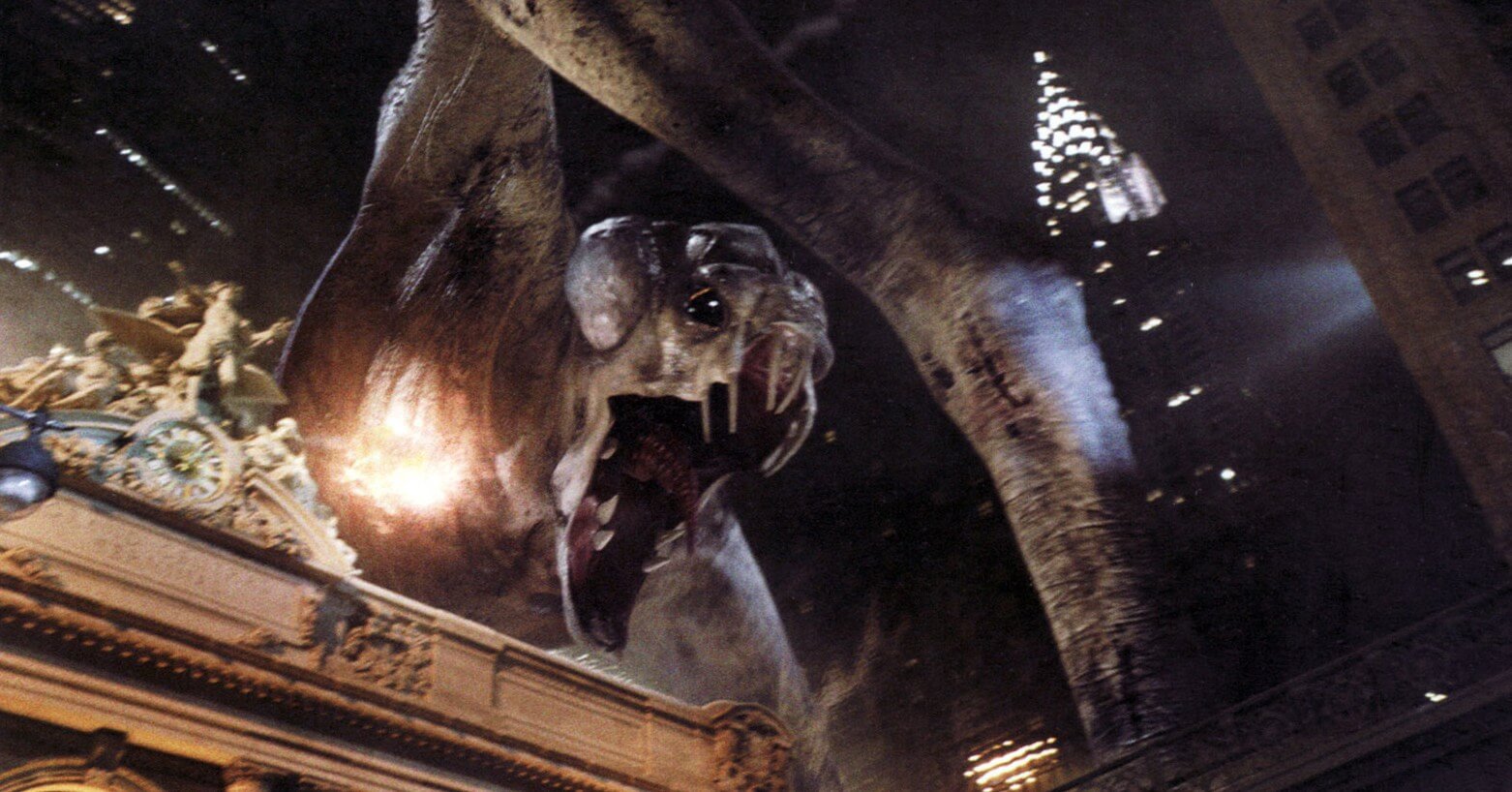CLOVERFIELD. Still great science fiction horror

Even if the problem is rather global, like the visit from extraterrestrials on Independence Day, we still observe it from the perspective of the people living there. This time is no different; the city is once again facing destruction at the hands (or tentacles) of a giant monster that suddenly emerged from the ocean. Unlike Emmerich’s Godzilla (which, by the way, was mediocre at best, but still watchable unlike its Japanese predecessors – I had to mention that), the main characters are not crisis management experts but ordinary citizens. Ordinary, disoriented people who don’t have access to the latest information and practically learn everything about the monster from their own experiences.
Cloverfield gained recognition among viewers thanks to a mysterious untitled trailer, but signed with the name of J.J. Abrams, the creator of one of the most popular series in recent years. At this point, light bulbs lit up in some heads next to signs saying “misunderstanding,” “unexplained mystery,” or “squeezing everything out of the viewers.” Anyone who watched Lost knows what it’s about. The campaign was in full swing thanks to its viral nature. All teasers revealed very little, and the monster itself, which rumbled through the streets, was barely visible. The aura of mystery surrounding Cloverfield from the beginning was the driving force of the campaign; the rest was done by internet users trying to guess the appearance of the enigmatic creature. Until the premiere, it wasn’t known how the monster would look, although the internet was teeming with fake artworks and conceptual graphics, including several very suggestive ones.

Unfortunately, my favorite, the well-designed mutated blue whale, turned out to be a fake. But there’s no need to despair; the designers did a great job. The result of their work doesn’t resemble any Earthly creatures, although one could force similarities to a certain organism, but the only common denominator would be the general outline of the body structure. Nevertheless, it’s better not to know before the screening what the next scourge of God, which the filmmakers have dealt to NY with again. As usual, the surprise is inversely proportional to the number of trailers watched.

What sets Cloverfield apart from other “monster movies” is the way we observe the misadventures of the unlucky wanderers. Instead of traditional “godly” shots, we see exactly what the small video camera, which the group constantly carries with them, recorded on the screen. This solution worked great in Blair Witch Project and the excellent episode of The X-Files titled X-Cops. Despite the chaos happening on the screen (after all, it’s hard to expect stable camera handling from a guy running across a collapsing bridge), we get high realism. I really like this form; it’s very easy to immerse yourself in the action and believe that everything really happened. Of course, it’s a bit harder than in the case of the witch from Coffin Rock, but after all, we go to the movies to forget about the surrounding reality for a moment, and the film is shot so well that if not for the subject matter, it could easily be a record of some real disaster in a big metropolis. The first shot of the monster’s head, visible literally for a second, has a hundred times more power than ordinary shots of a big lizard in Emmerich’s film. Every now and then, there’s a break in recording, so we don’t have to watch breaks and other slow-downs; all the crucial events from that memorable night are visible on the tape. As the hours pass, the number of skyscrapers standing upright decreases; the military appears, which… let’s be honest: the army is not coping with what crawled out of the Atlantic.

As is known, besides positive aspects of Cloverfield, there are also negative ones. First of all, the duration of the film. It’s scandalously short; it’s all over in just over seventy minutes. Moreover, this hour and a bit is very intense; when I saw the end credits, it seemed to me that the film lasted about half an hour. I regret that the film wasn’t artificially lengthened by adding some meaningless but suspenseful subplot. The feeling of dissatisfaction after the screening is very tiresome. It’s not like Lost where all the threads are cut off halfway. The ambiguous ending is not even a loophole but an open gate to a sequel, which considering the excellent financial results, will probably be made someday. The story is closed in its own way, but the bitterness remains.

There were also a few stupidities. Hiding in subway tunnels while a several-dozen-meter creature rages on the surface is not the best idea (unless the standards that apply to the designers of objects in New York City include multiple invasions – I don’t know, I’m not familiar). On the other hand, the scenes in the tunnels are suspenseful. Also, what happens to a certain lady behind a screen in the field hospital is rather difficult to justify using biology textbooks. These minor inaccuracies don’t particularly hinder the reception. Summa summarum, we get a great horror movie, which was only harmed by the buzz around it. The advertising campaign suggests that Cloverfield is a breakthrough film and one that absolutely knocks you into the seat, but it’s only (or perhaps “just”) a very good disaster horror, not necessarily associated with a mandatory visit to the cinema.
Words by David Karpinsky

